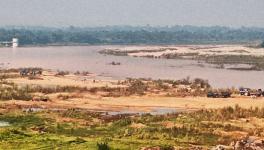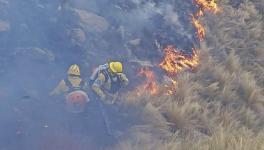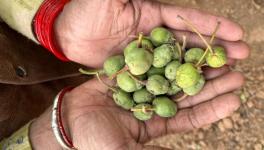Melting Himalayan Glaciers to Affect Food Production in South Asia
Patna: Climate change-induced melting glaciers in the Himalayas will soon affect agriculture and millions of farmers downstream partly dependent on glacial meltwater. This is likely to affect food production in South Asia, as per a new study titled ‘South Asian agriculture increasingly dependent on meltwater and groundwater’.
In addition to climate change, the increasing demand for water—due to expanding farmlands to feed a growing population—plays an important role in determining future water shortages, the study, published in Nature Climate Change, states.
The results of this study can be used for targeted climate adaptation and sustainable water management in this geopolitically complex region. This could include increasing water storage capacity in large and small reservoirs, using water more efficiently in agriculture and switching to different crops or different sowing dates. Such measures can help reduce the pressure on meltwater and groundwater resources. The researchers will continue their calculations to determine the best combination of measures.
The study was conducted by the scientists of the Kathmandu-based International Centre for Integrated Mountain Development (ICIMOD), Utrecht University and Wageningen University & Research.
According to Arun Shrestha, a senior climate specialist at ICIMOD, the researchers used “a unique cryosphere–hydrology–crop model that projects how sources of water supply such as meltwater and groundwater will shift in the future in the Indus, Ganges and Brahmaputra basins”.
“The results of this study will help us to better plan agriculture and water management, which is essentially important to avoid water scarcity and the depletion of groundwater resources,” Shrestha added.
Arthur Lutz, a hydrologist at Utrecht University and the lead author of the study, said: “Using a novel model, we were able to calculate very precisely where and when water will be needed in the future, and where it will come from—rainwater, groundwater, or meltwater from the mountains.”
The model integrates the effects of climate change and increasing water demand. “The model incorporates changes in snowfall and glaciers in the high mountains as well as changes in water use for downstream agricultural crops.” This allowed the scientists to see exactly what the climate and socioeconomic effects would be on South Asia’s water supply in the future. They were also able to see how the pressure on different water sources (meltwater, rainwater, groundwater) will change,” Lutz added.
Pointing to what exactly will change, Hester Biemans, co-author of the study, said that global warming causes glaciers to start melting earlier in the year just when crops are being sown. This is favourable but later in the year, when crops need the most water, there is less meltwater.
Climate change also makes rainfall more irregular. Therefore, farmers have to pump more groundwater later in the year to compensate for a shortage of rain and meltwater. The effect is exacerbated by expanding farmland needed to feed more people. “Therefore, a lot of extra groundwater has to be pumped up—more than can be replenished. This is not sustainable in the long run,” Biemans said.
Himalayan glaciers make a significant contribution to water resources for millions of people. Most previous studies have focussed on glaciers at lower altitudes that are easier to access. These show a strong trend of shrinking with an accelerating rate in recent years, the researchers said.
Earlier work on high-altitude glaciers relied on satellite measurements. “However, with the information we now have from the weather stations and the ice core, it is clear that even the highest glaciers are melting rapidly and at an accelerating rate. These changes will have tremendous consequences on people’s livelihood and wellbeing,” the study states.
Early this year, research by ICIMOD highlighted that ice on Mount Everest has been thinning at an alarming rate, and its glaciers at the highest point may vanish by mid-century. The study revealed that glaciers at the highest point on earth are experiencing the impact of climate change. “Mount Everest has been losing ice significantly since the late 1990s, more than 80 times faster than the 2,000 years it took to form this thickness of the ice,” the study showed
The findings were based on data from a 10 metre-long ice core obtained from South Col Glacier at an elevation of 8,020 metres above sea level (masl) as well as meteorological observations from the two highest automatic weather stations in the world located on the southern slopes of Mount Everest at 7,945 and 8,430 masl.
Get the latest reports & analysis with people's perspective on Protests, movements & deep analytical videos, discussions of the current affairs in your Telegram app. Subscribe to NewsClick's Telegram channel & get Real-Time updates on stories, as they get published on our website.























